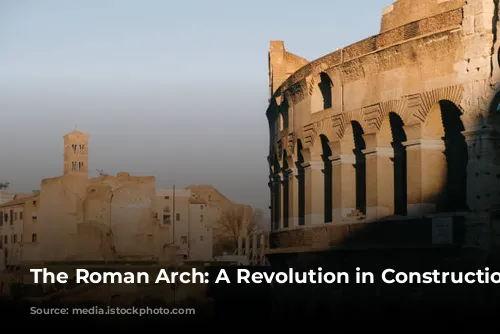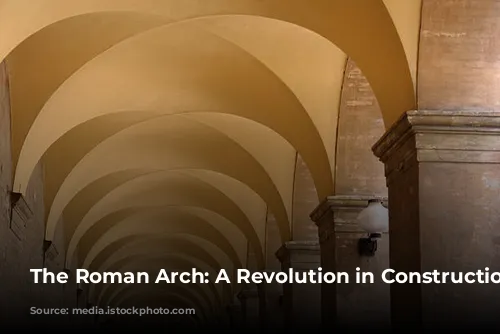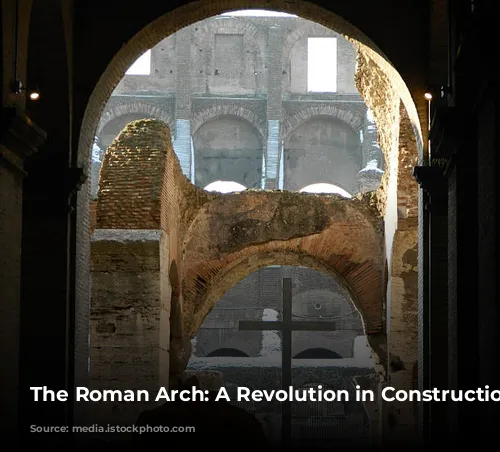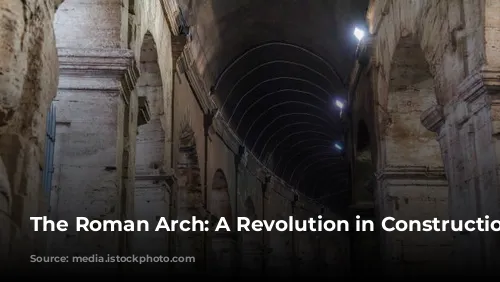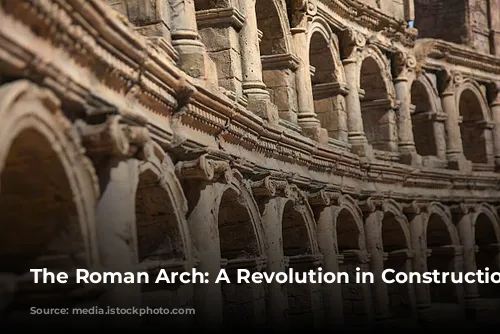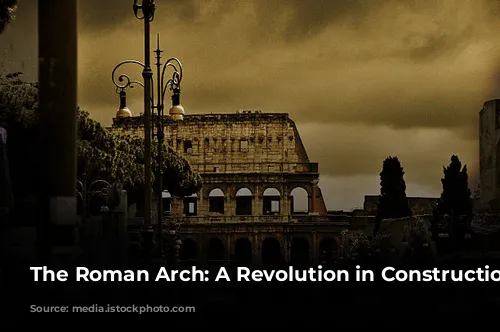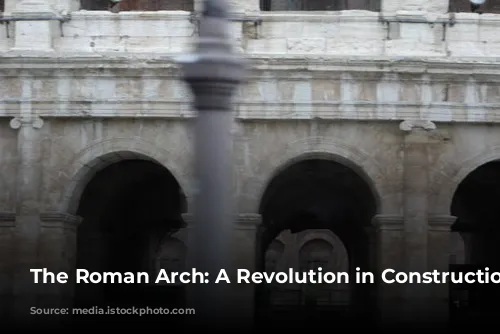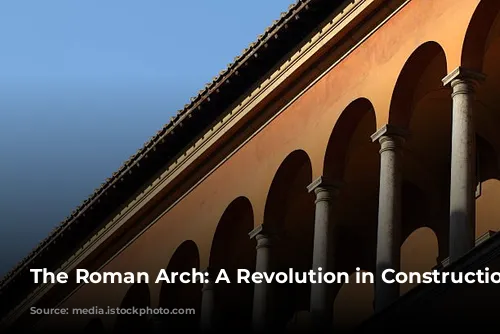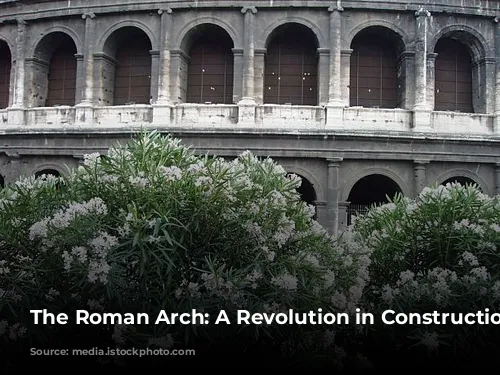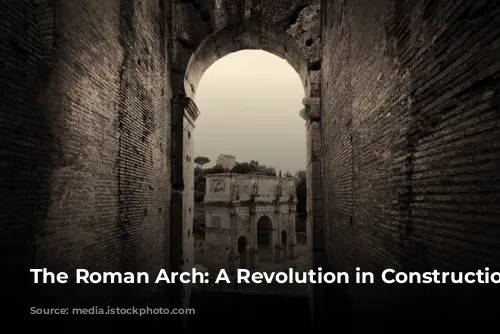Imagine a world without towering cathedrals, grand stadiums, or even sturdy bridges. Before the Romans, building large, complex structures was a challenge. Architects relied on post and lintel systems, like those found in ancient Greece and Egypt. Large, heavy beams rested on sturdy columns, but this limited the size and height of buildings. Windows were small and rare, leading to dark interiors.
But then came the arch. This simple, yet ingenious invention revolutionized architecture. The Roman arch used the weight of the structure above to hold itself together. Voussoirs, carefully shaped stones, were arranged in a curve, with a keystone at the top. This design diverted the weight downward, creating a powerful force called thrust.
The arch allowed for taller, grander buildings with larger, lighter roofs. It opened up the possibility of spacious, well-lit interiors. The post and lintel system couldn’t compare.
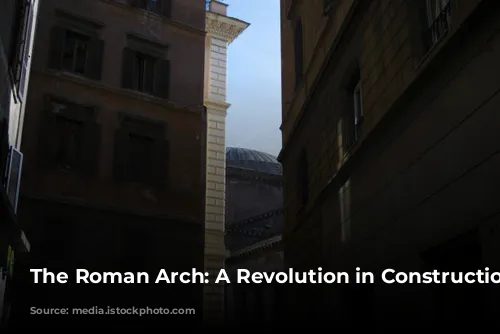
Vaults: Expanding the Possibilities
The arch wasn’t just a doorway or window, it was the foundation for something even greater. Barrel vaults were like long, extended arches, forming tunnels. These were used to build vast warehouses in ancient Rome, perfect for storing the city’s massive shipments of goods. The ruins of the Basilica of Maxentius are a spectacular example of this impressive construction technique.
But the Romans didn’t stop there. They took the arch even further with groin vaults. These were formed when two barrel vaults met at a ninety-degree angle, creating a strong, self-supporting structure. Groin vaults required less support and were even more sturdy than barrel vaults, opening up endless possibilities for building grand structures. The Colosseum, with its impressive high ceilings and monumental stadium, is a testament to the power of the groin vault.
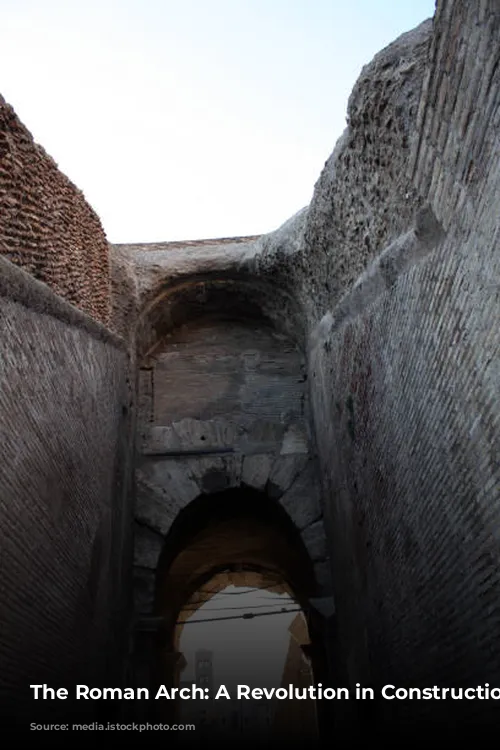
Ancient Temples and Sacred Spaces
The Romans weren’t just about practicality, they were also masters of sacred architecture. The Temple of Hercules Victor, a beautiful example of a peripteral temple, stands as a testament to their dedication to their gods. Built in the 2nd century BCE, the temple features fluted columns and Corinthian capitals, showcasing their Greek influences.
The Temple of Hercules Victor stands in the Forum Boarium, a historic area steeped in legend. This was the site of the first Roman market, where goods were brought in by boats on the Tiber River. Today, the area is a peaceful park, with the Temple of Portunus standing nearby. The Forum Boarium is a window into ancient Rome, offering a glimpse into their commerce, religion, and urban planning.
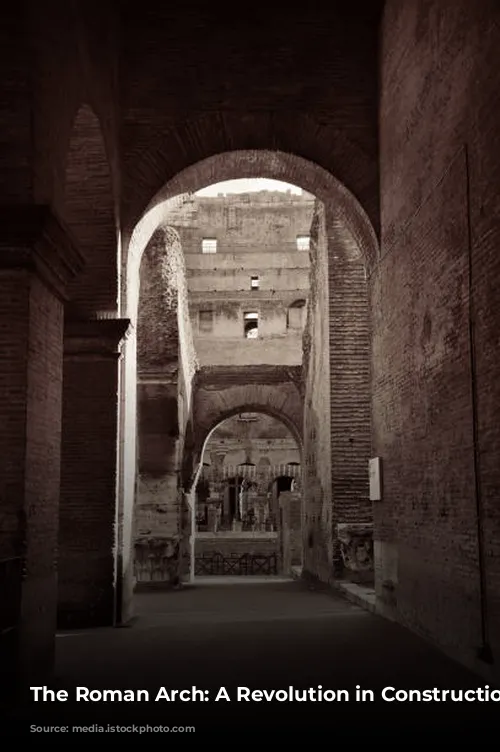
The Capitoline Hill: A Tapestry of History
The Capitoline Hill, one of the seven hills of Rome, played a crucial role in the city’s history. As a strategic fortress, it witnessed the rise and fall of civilizations. The remains of a temple to Jupiter Optimus Maximus, built during the Etruscan period, are a testament to the hill’s importance.
The Capitoline Hill also boasts a fascinating mix of architecture. The Campidoglio, designed by Michelangelo, stands alongside the Victor Emmanuel Monument and the ancient Santa Maria in Aracoeli. This unique blend of styles showcases Rome’s rich history, offering a glimpse into its past and present.
The arch, the vault, the temple – these are just a few examples of the Roman architectural ingenuity that continues to amaze and inspire us today. From the grandeur of the Colosseum to the serenity of the Forum Boarium, Rome stands as a testament to the enduring power of their architectural legacy.
